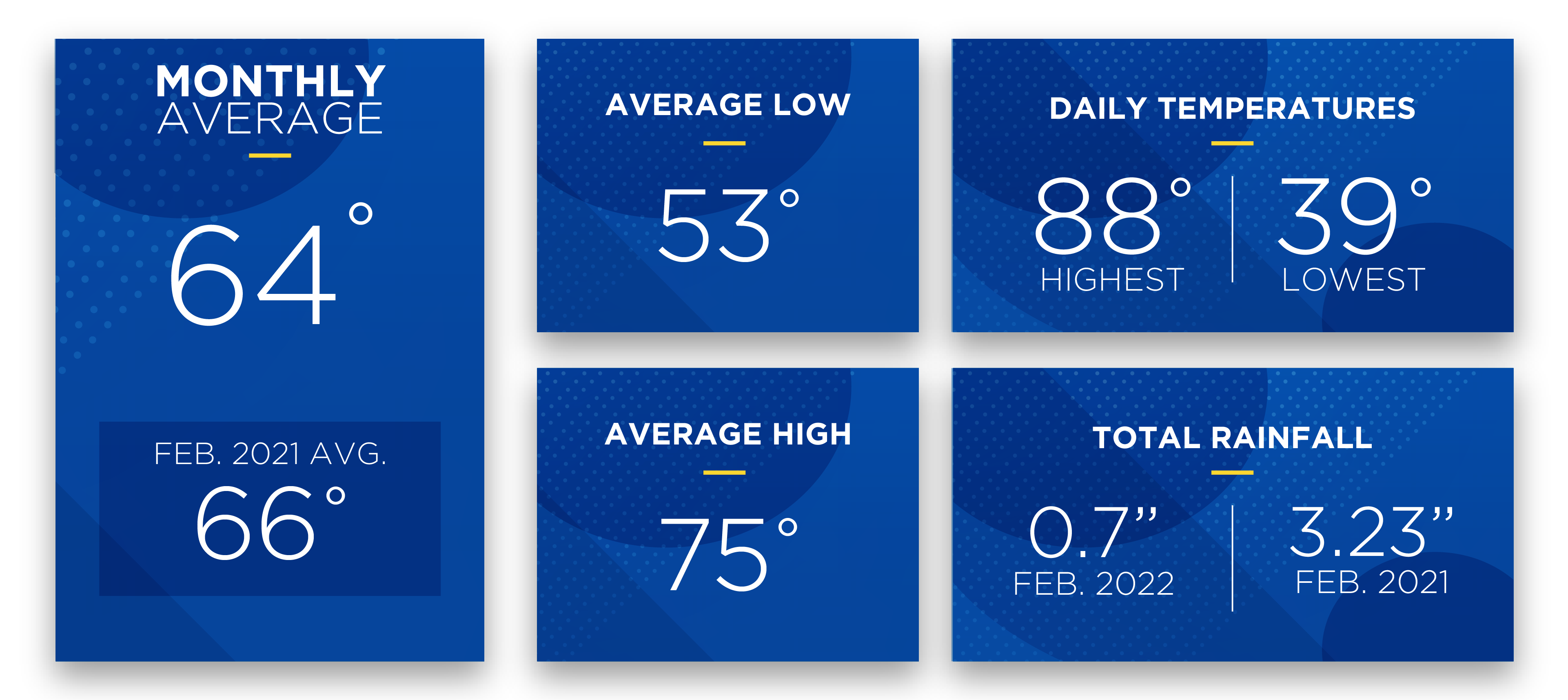February 2022 Sunshine State Stats
Warmer temperatures appeared in February 2022 after January’s below-freezing cold snap. The average temperature for the month was 64 degrees, which was 2 degrees cooler than last month’s average. The average high was 75 degrees while the average low was 53 degrees.
The highest daily recorded temperature in February was 88 degrees and the lowest was 39 – the highest recorded temperature was 85 in January 2022, while the lowest recorded temperature was 32. February saw little rainfall, only 0.7 inches while the average rainfall in February is 2.87 inches.
February’s daily temperature fluctuations were extreme. The monthly difference from the average high to the average low was 22 degrees. The highest daily temperature fluctuation was 32 degrees. Twelve days in the month reached over 80 degrees, while the low temperature dropped into the 30s and 40s during ten days in February.
January 2022 temperatures were unseasonably cold in Central Florida. Nighttime temperatures in February 2022 were cold and daytime temperatures were very warm. Members may notice an increase in their February energy usage if they used both air conditioning and heating during the month.
March forecast:
The Old Farmer’s Almanac predicts a warm March with an average temperature of 71 degrees, which is 4 degrees warmer than average. Rainfall will be scarce – only 1 inch, which is 2 inches below average for the month. Expect daily high temps of 80 degrees or more with lows in the 50s.
Now’s the time to schedule an HVAC service check before summer heats up. A well-maintained HVAC system runs more efficiently and helps you avoid unexpected downtime and repair costs. Read December 2021 SECO News to learn more about scheduling an HVAC service.
To check historical usage, log into SmartHub to view past bills and consumption charts. If your usage is high, SECO offers several energy-efficiency tools to help you identify energy wasters. Take the Home Energy Assessment to receive a detailed email tailored to your home’s features and lifestyle. The energy-saving advice will provide low-cost ways to decrease your usage – and your electric bill.
To easily calculate how much energy your appliances, lighting, electronic devices, and other energy-using items in your home consume, use the Energy Estimator.







